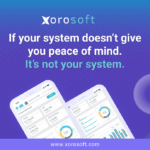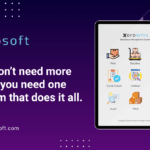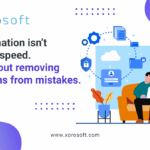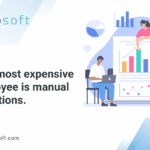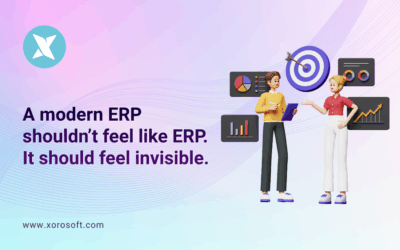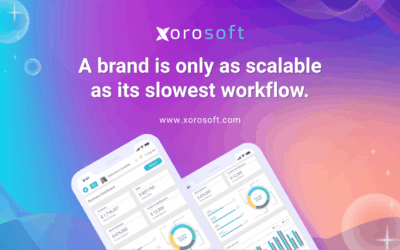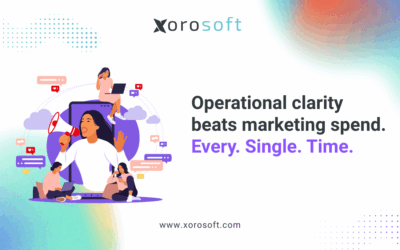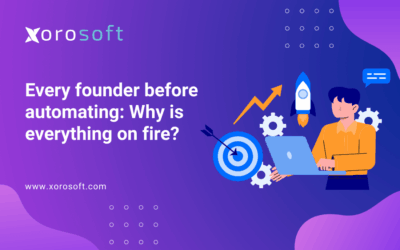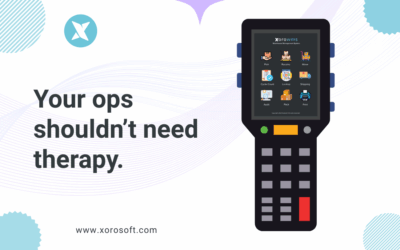
Introduction to ERP Systems and Their Role in Supply Chain Visibility
In today’s fast-paced and competitive business landscape, supply chain visibility is crucial for organizations to stay ahead of the curve. This is where Enterprise Resource Planning (ERP) systems come into play. An ERP system is a comprehensive suite of software applications that integrate various business functions, including supply chain management, into a unified platform. By implementing an ERP system, companies can unlock efficiency and transparency throughout their supply chain operations.
ERP systems provide a centralized hub for managing and tracking every aspect of the supply chain, from procurement and inventory management to production and logistics. This allows organizations to gain real-time visibility into their supply chain processes, enabling them to make faster and more informed decisions. With the ability to monitor and analyze data from multiple sources, ERP systems eliminate the silos that often hinder supply chain visibility and provide a holistic view of the entire operation.
The Benefits of Implementing an ERP System for Supply Chain Management
Implementing an ERP system for supply chain management offers numerous benefits for businesses. Firstly, it improves efficiency by automating routine tasks and reducing the need for manual data entry. This not only saves time but also minimizes the risk of human error, leading to increased accuracy and productivity. With an ERP system, supply chain professionals can streamline their workflows and focus on strategic activities that add value to the organization.
Secondly, ERP systems enhance transparency by providing real-time visibility into the supply chain. Stakeholders can access up-to-date information on inventory levels, production schedules, and order statuses at any given time. This transparency improves communication and collaboration between different departments, suppliers, and customers, leading to better coordination and faster response times. With a clear understanding of the supply chain, organizations can identify bottlenecks, optimize processes, and proactively address issues before they escalate.
Lastly, ERP systems enable data-driven decision-making. By capturing and analyzing vast amounts of data, organizations can gain valuable insights into their supply chain performance. This data can be used to identify trends, predict demand, and optimize inventory levels. With the ability to generate accurate forecasts, companies can improve customer service, reduce stockouts, and minimize carrying costs. ERP systems empower organizations to make data-backed decisions that drive growth and profitability.
Understanding the Features and Functionality of ERP Solutions
ERP solutions, such as Xorosoft ERP, offer a wide range of features and functionality to enhance supply chain visibility. These systems typically include modules for inventory management, procurement, order management, production planning, and logistics. By integrating these modules, organizations can achieve end-to-end visibility and control over their supply chain processes.
Xorosoft ERP, for example, provides a comprehensive inventory management system that enables organizations to track and manage their inventory in real-time. With features like barcode scanning, stock level monitoring, and automated reorder points, companies can optimize their inventory levels, reduce carrying costs, and minimize stockouts. This not only improves supply chain visibility but also enhances customer satisfaction by ensuring timely and accurate deliveries.
In addition to inventory management, Xorosoft ERP offers robust accounting functionality. By integrating accounting processes into the ERP system, organizations can streamline financial transactions, track expenses, and generate accurate financial reports. This eliminates the need for manual reconciliation between different systems and ensures data integrity across the organization. With a unified view of financial data, organizations can make informed decisions and comply with regulatory requirements.
The Role of ERP Systems in Inventory Management and Optimization
Efficient inventory management is a critical component of a successful supply chain. ERP systems play a crucial role in inventory management and optimization by providing real-time visibility into inventory levels, locations, and movements. With accurate and up-to-date information, organizations can make informed decisions regarding inventory replenishment, stock allocation, and demand forecasting.
By integrating inventory management into the ERP system, organizations can automate routine tasks such as stock counting, order processing, and replenishment. This eliminates the need for manual data entry and reduces the risk of errors and delays. With automated processes, companies can improve the accuracy and speed of inventory management, resulting in reduced carrying costs and improved order fulfillment rates.
ERP systems also enable organizations to optimize their inventory levels by setting automated reorder points and safety stock levels. By analyzing historical data and demand patterns, ERP systems can generate accurate forecasts and recommend optimal inventory levels. This helps organizations strike a balance between minimizing stockouts and reducing carrying costs, leading to improved customer service and profitability.
Streamlining Accounting Processes with ERP Systems
Accounting is another critical aspect of supply chain management that can be streamlined with the help of ERP systems. Traditionally, organizations have relied on separate accounting software that is disconnected from other systems, leading to duplicate data entry, reconciliation issues, and inefficiencies.
ERP systems, such as Xorosoft ERP, integrate accounting processes into a unified platform, eliminating the need for manual reconciliation and data entry. With a centralized accounting module, organizations can automate financial transactions, track expenses, and generate accurate financial reports. This not only saves time but also improves data integrity and ensures compliance with accounting standards.
Furthermore, ERP systems provide real-time visibility into financial data, enabling organizations to monitor cash flows, track costs, and analyze profitability. With accurate and up-to-date financial information, companies can make informed decisions regarding pricing, cost optimization, and investment opportunities. This empowers organizations to drive financial performance and maximize profitability.
Choosing the Right ERP Solution for Your Business
Selecting the right ERP solution for your business is a critical decision that requires careful consideration. There are several factors to take into account, including the size of your organization, industry-specific requirements, budget, and scalability.
Firstly, assess the specific needs of your organization and identify the key functionalities required in an ERP system. Consider factors such as inventory management, order processing, production planning, and financial management. Make a list of essential features and prioritize them based on your business requirements.
Secondly, evaluate the scalability of the ERP solution. As your business grows, your supply chain requirements may change. Ensure that the ERP system can accommodate future growth and adapt to evolving needs. Scalability is crucial to ensure a long-term return on investment and avoid the need for a costly system replacement in the future.
Thirdly, consider the implementation process and support services offered by the ERP vendor. Implementing an ERP system can be complex and time-consuming. Look for vendors that provide comprehensive implementation support, training, and ongoing technical assistance. A strong partnership with the vendor is essential for a successful ERP implementation.
Lastly, consider the total cost of ownership, including upfront costs, licensing fees, maintenance, and ongoing support. Evaluate the return on investment and the potential cost savings associated with improved efficiency, reduced errors, and increased customer satisfaction. A thorough cost-benefit analysis will help you make an informed decision.
Implementing an ERP System: Best Practices and Challenges
Implementing an ERP system can be a complex endeavor that requires careful planning and execution. To ensure a successful implementation, follow these best practices:
-
Define clear objectives: Clearly define the goals and objectives you want to achieve with the ERP system. This will help guide the implementation process and ensure alignment with your business strategy.
-
Invest in change management: Implementing an ERP system often requires changes to existing business processes and workflows. Invest in change management initiatives to ensure smooth adoption and minimize resistance from employees.
-
Engage key stakeholders: Involve key stakeholders from different departments in the planning and implementation process. Their input and feedback will be crucial in designing a solution that meets the needs of the entire organization.
-
Ensure data quality: Clean and accurate data is essential for a successful ERP implementation. Take the time to cleanse and validate your data before migrating it to the new system. This will minimize data integrity issues and ensure a smooth transition.
-
Provide comprehensive training: Training is crucial to ensure that employees understand how to use the ERP system effectively. Provide comprehensive training programs and ongoing support to empower employees and maximize the benefits of the system.
While implementing an ERP system offers numerous benefits, it also comes with its fair share of challenges. Some common challenges include resistance to change, data migration issues, and system integration complexities. However, by following best practices and partnering with an experienced ERP vendor, organizations can overcome these challenges and achieve a successful implementation.
The Future of ERP Systems and Supply Chain Visibility
As technology continues to evolve, the future of ERP systems and supply chain visibility looks promising. Emerging technologies such as artificial intelligence (AI), machine learning, and the Internet of Things (IoT) are expected to further enhance the capabilities of ERP systems.
AI and machine learning algorithms can analyze large volumes of data and identify patterns, trends, and anomalies. This can help organizations gain deeper insights into their supply chain performance, predict demand more accurately, and optimize inventory levels. AI-powered ERP systems can also automate routine tasks, such as order processing and demand forecasting, freeing up resources for more strategic activities.
The IoT is another technology that holds great potential for supply chain visibility. By connecting devices, machines, and sensors throughout the supply chain, organizations can gather real-time data on inventory levels, equipment performance, and environmental conditions. This data can be integrated into the ERP system, providing a comprehensive view of the supply chain and enabling proactive decision-making.
In conclusion, ERP systems have revolutionized supply chain visibility by providing a centralized platform for managing and tracking every aspect of the supply chain. By implementing an ERP system, organizations can unlock efficiency, transparency, and data-driven decision-making. The future of ERP systems and supply chain visibility looks promising, with emerging technologies expected to further enhance the capabilities of these systems.
Conclusion: Embracing the Power of ERP Systems for a Transparent and Efficient Supply Chain
In today’s highly competitive business landscape, supply chain visibility is no longer a luxury but a necessity. Organizations that embrace the power of ERP systems can unlock efficiency, transparency, and data-driven decision-making throughout their supply chain operations.
By implementing an ERP system, businesses can streamline their supply chain processes, gain real-time visibility into inventory levels and production schedules, and improve customer service. ERP systems, such as Xorosoft ERP, offer a comprehensive suite of features and functionality for inventory management, accounting, and supply chain optimization.
When choosing an ERP solution, consider factors such as scalability, implementation support, and total cost of ownership. Follow best practices during the implementation process and be prepared to overcome challenges along the way.
As technology continues to evolve, the future of ERP systems and supply chain visibility looks promising. AI, machine learning, and IoT are expected to further enhance the capabilities of ERP systems, enabling organizations to achieve new levels of efficiency and agility.
In conclusion, organizations that embrace ERP systems and leverage their power will gain a competitive edge in today’s dynamic business environment. Unlock the potential of your supply chain by booking a demo with Xorosoft today.
